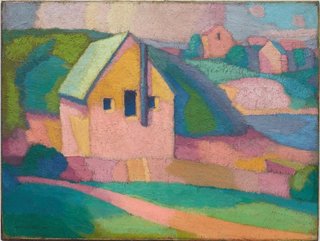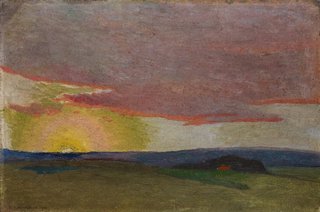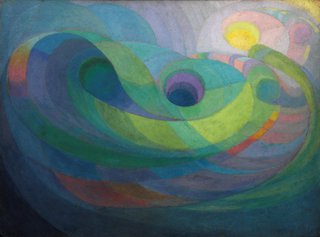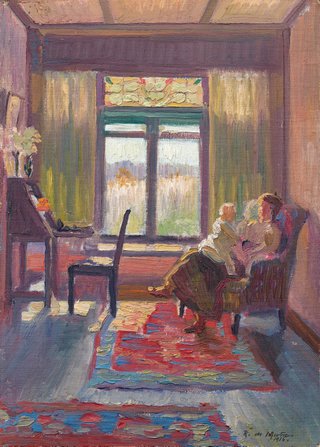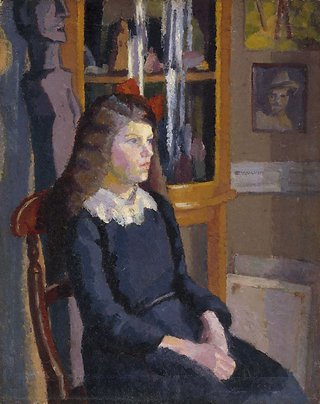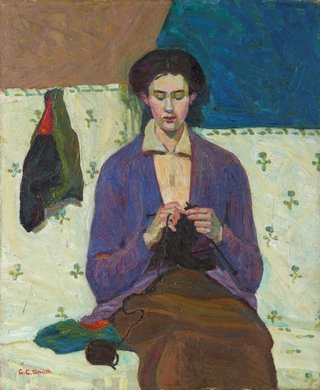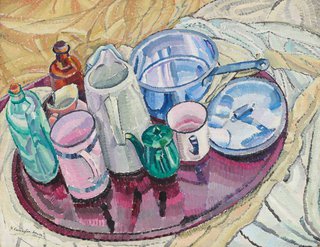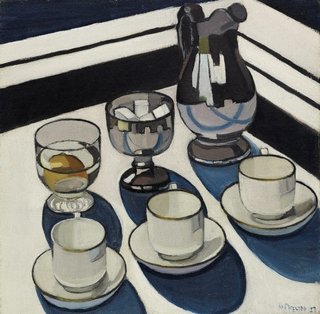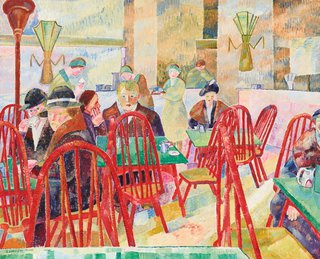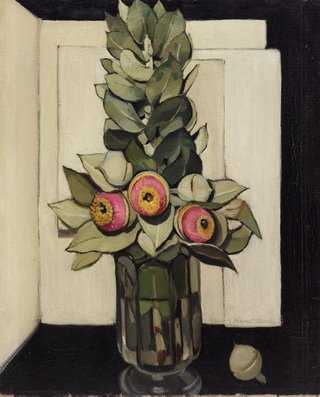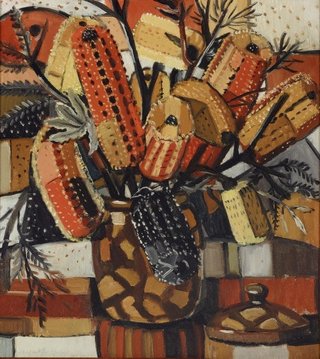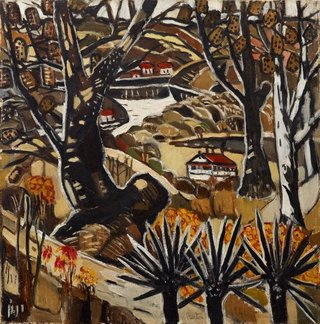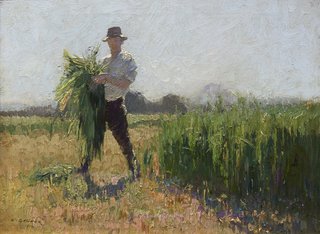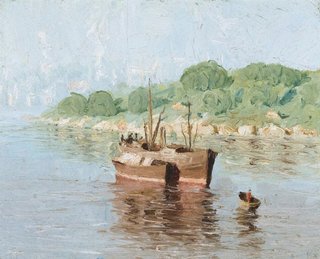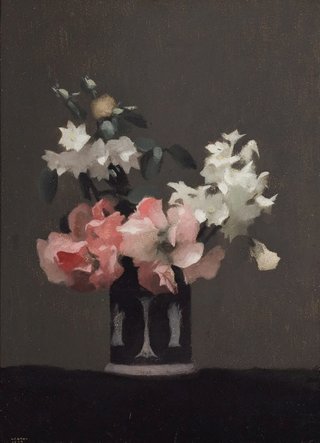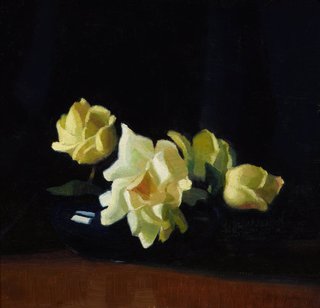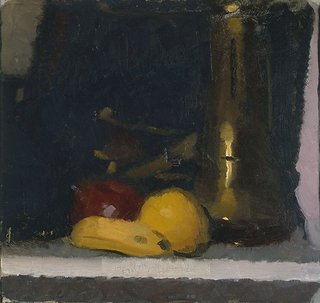Art Sets.
20th-century Australian art: Colour and light: early modernism in Sydney
Print this setBy the Art Gallery of NSW
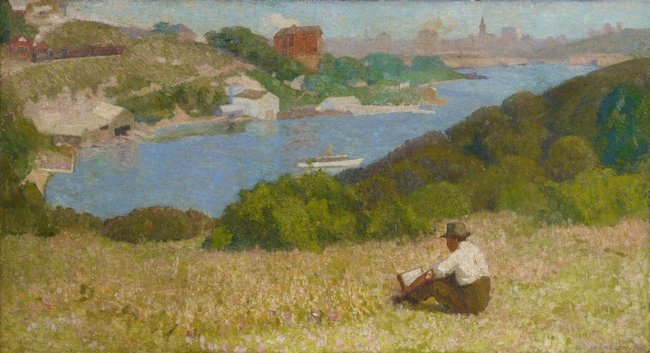
AGNSW collection Roland Wakelin Down the hills to Berry's Bay 1916
'It was about the year 1913 that the first glimmerings of what is now called 'modern art' came to us in Sydney... Colour was the thing it seemed - vibrating colour, and there were new ideas in composition - unorthodox... We commenced to heighten our colour, working in stippling touches, and to make severe cubist drawings' - Roland Wakelin, 1928
With its broken brushstrokes of pure vibrating colour, this painting reveals Roland Wakelin's admiration for E Phillips Fox's painting The ferry and for the modernist approach of the post-impressionists encouraged by his teacher Antonio Dattilo-Rubbo. The simplified form and accentuated arabesque of the shoreline foreshadow the earliest abstract paintings in Australia. Wakelin's radical approach, however, caused a furore among the Royal Art Society's hanging committee in 1916.
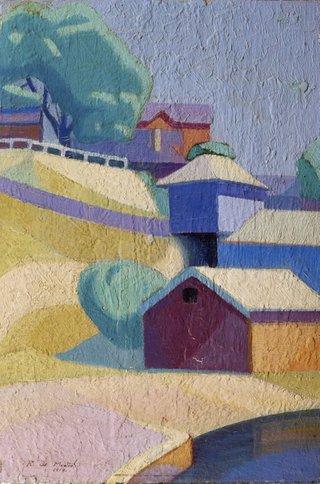
AGNSW collection Roy de Maistre The boat sheds, in violet red key 1919
From around 1917, Sydney artists Roy de Maistre and Roland Wakelin began exploring the power of colour to connect art and music. They experimented with colour to produce synaesthesia, the condition in which the stimulation of one sense leads to an automatic, involuntary response in another. These experiments culminated in de Maistre and Wakelin's joint Colour in art exhibition in 1919 featuring small, colour-music 'syncromies' that prompted the first wave of abstract painting in Australia. While based on images of local scenes around Sydney's harbour, their works were intensely coloured, radically simplified and anti naturalistic.
This work is one of only four paintings known to have been included in this seminal exhibition. It demonstrates de Maistre's new dealings with colour and simplified form - taking colour beyond descriptive towards constructive and decorative uses.
Australian tonalism
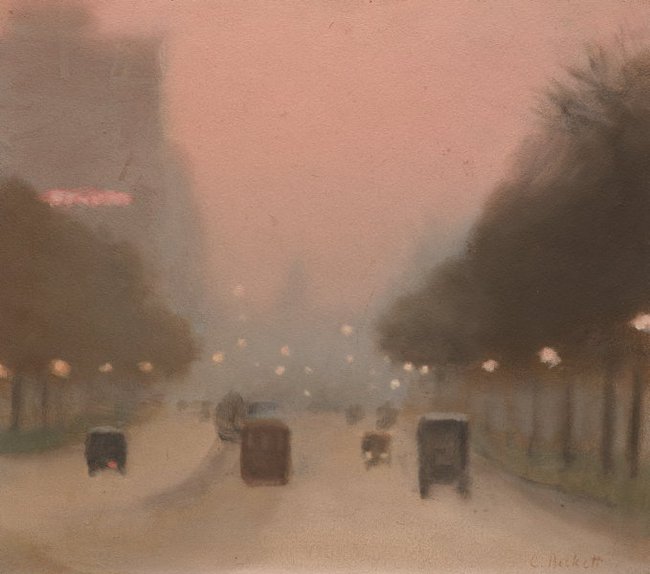
AGNSW collection Clarice Beckett Evening, St Kilda Road circa 1930
This painting beautifully demonstrates Clarice Beckett's signature subject of the city's soft-focused modernity. Fusing urban electric glow with the ambient luminosity of twilight, Beckett explores the limits of representation while using colour for potent atmospheric effect. The city is enveloped with a rosy-toned veil while darkened box-shaped cars retrieve Beckett's composition from a misty abstraction.
Beckett's preference for early evening or morning subjects was not for simple poetic effect. Instead, as Evening, St Kilda Road demonstrates, she was drawn to the technical challenge of painting the essence of her subject within the fleeting moment; of observing light effects and developing delicate tonal nuances that blurred the terrains of reality and illusion.

